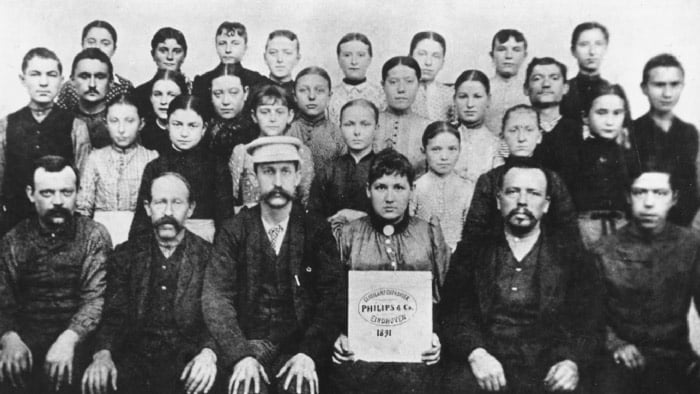Philips is a globally recognized name, celebrated for its innovative strides in technology and its impact across various industries. Originating as a small enterprise in the Netherlands, Philips has transformed into a leader in health technology, lighting, and consumer electronics. Let’s delve into the company’s evolution and its role in shaping industries through pioneering innovations. Uncover the advanced capabilities of the Philips 5500 LatteGo review
The Early Days: Philips’ Modest Origins
Founded in 1891 by Gerard Philips and his father Frederik in Eindhoven, Netherlands, Philips initially focused on producing carbon-filament lamps. The company faced numerous challenges, including intense competition and financial hurdles. Despite these difficulties, their commitment to quality laid a strong foundation for Philips’ future growth as a global innovator. Get a closer look at the features of the Philips 5400 LatteGo review
Breaking Ground with Innovation
By the early 20th century, Philips had established itself as a significant player in the European lighting market. The establishment of its Research Laboratory (NatLab) in 1914 became a turning point, driving groundbreaking innovations that enabled the company to venture into new industries and achieve significant growth milestones. Compare these two machines side by side in the Philips LatteGo 5400 vs 4300 review
Diversifying with Radio Technology
In the 1920s and 1930s, Philips expanded into the emerging radio industry, launching its first radios in 1927. By 1932, the company had sold over a million units, marking a major achievement in consumer electronics. This success underscored Philips’ ability to anticipate market trends and meet consumer demands. Discover the differences among these models in the Philips 3200 vs 4300 vs 5400 review
Navigating Wartime Challenges
World War II presented significant challenges for Philips, including operational disruptions and the destruction of facilities. However, the company’s resilience shone through as it relocated key personnel and continued vital research. Philips’ contributions to radar technology during the war exemplified its capacity to innovate under challenging circumstances. Learn how these two models compare in the Philips 3200 vs 4300 review
Post-War Breakthroughs: The Audio Cassette Revolution
In 1963, Philips introduced the compact audio cassette, revolutionizing how people recorded and played music. This invention achieved worldwide acclaim, solidifying Philips as a leader in consumer technology and shaping the future of music consumption. See what sets these models apart in the Philips 3200 vs 5400 review
Transforming Entertainment: The Compact Disc Collaboration
Philips’ partnership with Sony in the late 1970s resulted in the creation of the compact disc (CD). Offering superior audio quality and durability, the CD redefined the music industry. This collaboration highlighted Philips’ ability to form strategic alliances and drive technological advancements that transformed entertainment. Get a detailed review of the Philips LatteGo 5400 review

Innovations in Electronics and Television
In the latter part of the 20th century, Philips expanded further into consumer electronics, contributing to the development of technologies like VHS and DVD. In the 1990s, the company introduced the Ambilight TV, setting new standards in home entertainment and enhancing the way people experienced media. Discover the compact and efficient design of the Philips 3200 LatteGo review
A Strategic Shift to Healthcare Technology
Recognizing the potential in healthcare, Philips began focusing on medical imaging, patient monitoring, and health informatics in the 1980s. This strategic pivot marked the company’s transition into a health technology leader, emphasizing innovation to improve patient care and outcomes. Dive into the advanced features of the Philips 4300 LatteGo review
Specializing in Health and Lighting
In recent years, Philips has concentrated on health technology and lighting solutions. In 2016, the company spun off its lighting division, now known as Signify, to dedicate its resources to advancing health technology. This move reflects a commitment to global trends prioritizing health, sustainability, and well-being.
Sustainability as a Core Value
Philips has long championed sustainability, setting ambitious goals such as achieving carbon-neutral operations and embracing circular economy principles. Beyond environmental efforts, the company prioritizes societal well-being, ensuring its innovations contribute positively to global challenges.
Embracing a Digital-First Future
In line with the digital age, Philips has adopted technologies like artificial intelligence (AI) and data analytics to revolutionize its healthcare offerings. By focusing on connected care and intelligent health solutions, the company aims to remain at the forefront of technological progress, driving improvements in healthcare delivery.

Conclusion: A Legacy Rooted in Innovation and Resilience
Philips’ remarkable history demonstrates the power of adaptability, innovation, and strategic foresight. From its early days as a lamp manufacturer to its role as a leader in health technology, the company has continually evolved to meet societal needs. Its innovations, from transforming music consumption to advancing healthcare, have left an indelible mark on industries worldwide.
As Philips continues to push technological boundaries and address global challenges, its rich legacy serves as a beacon of progress. With a pioneering spirit and a forward-looking approach, Philips is poised to influence industries and improve lives for generations to come.
